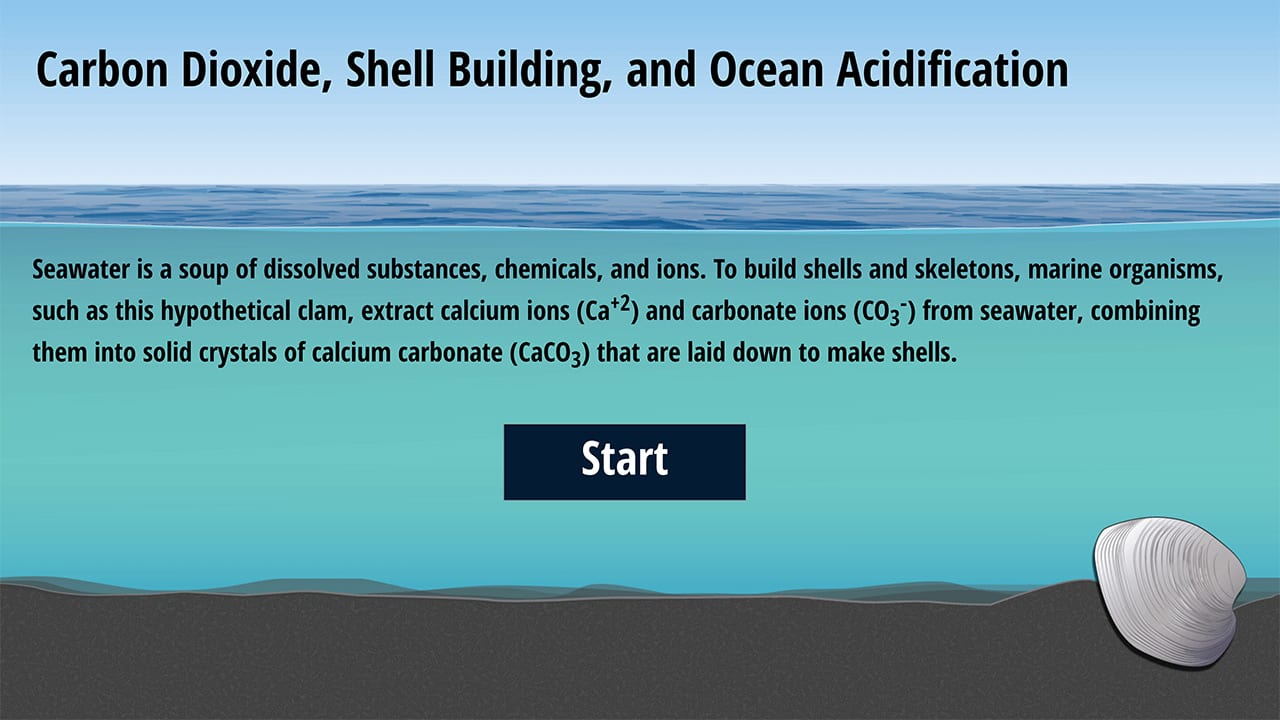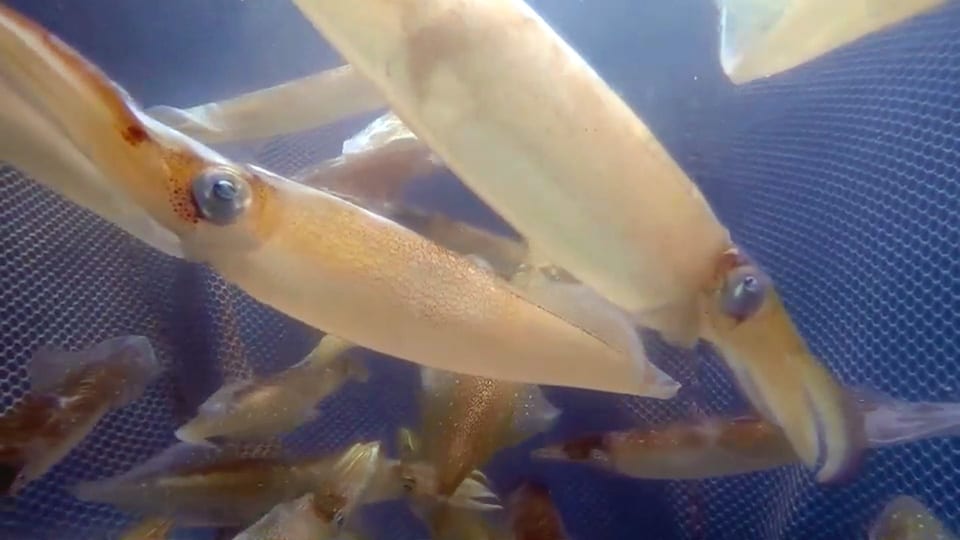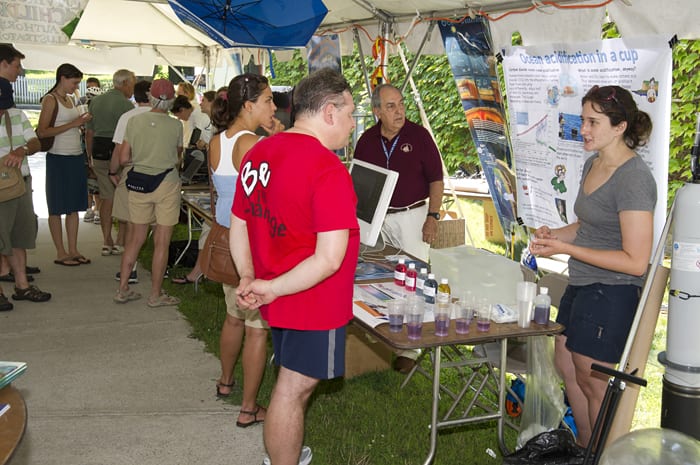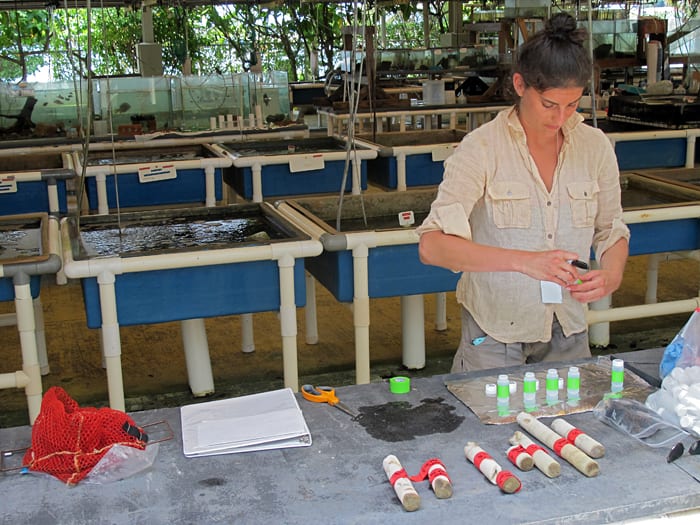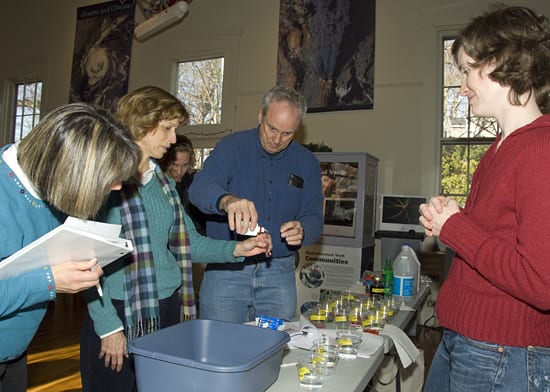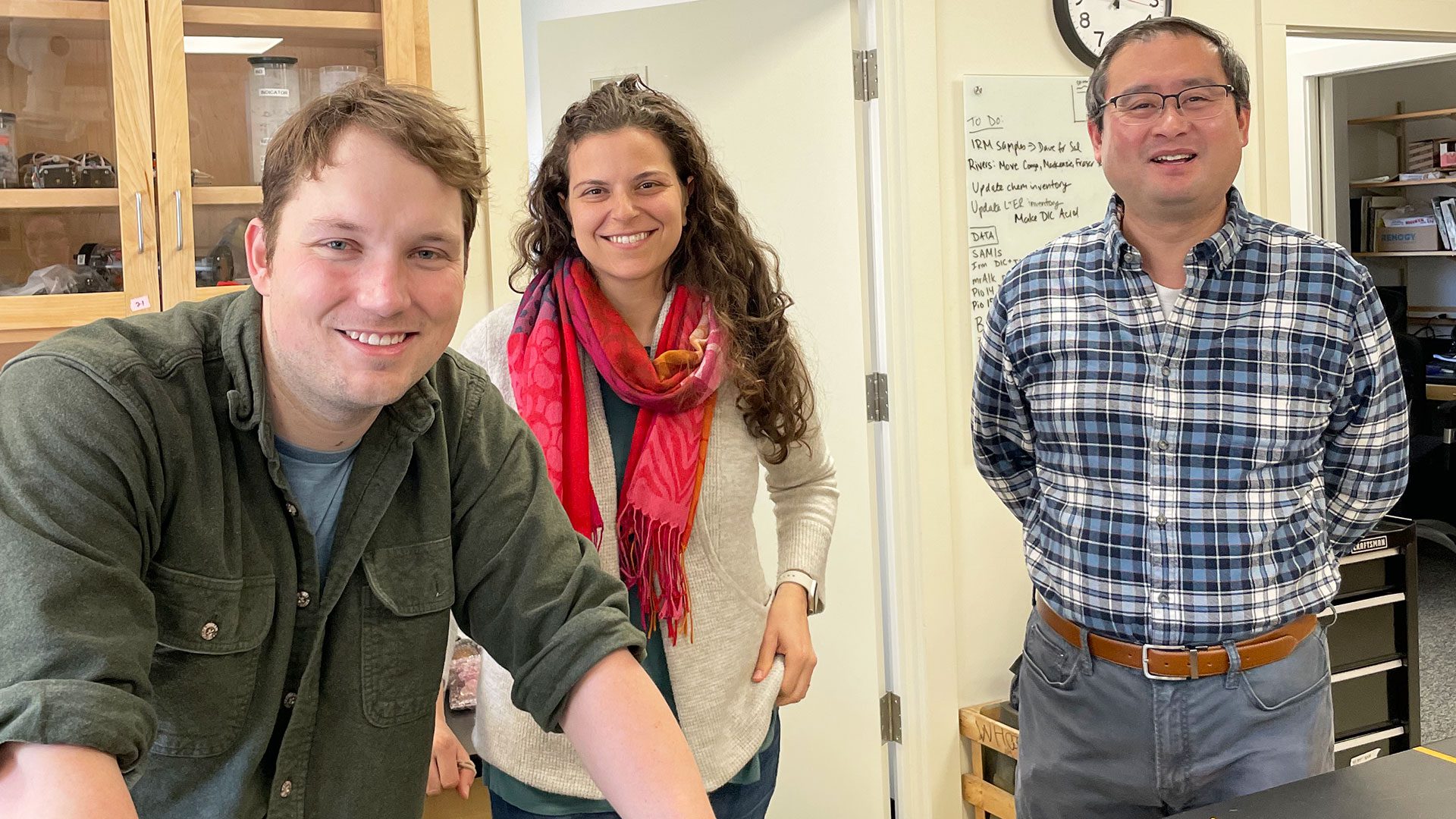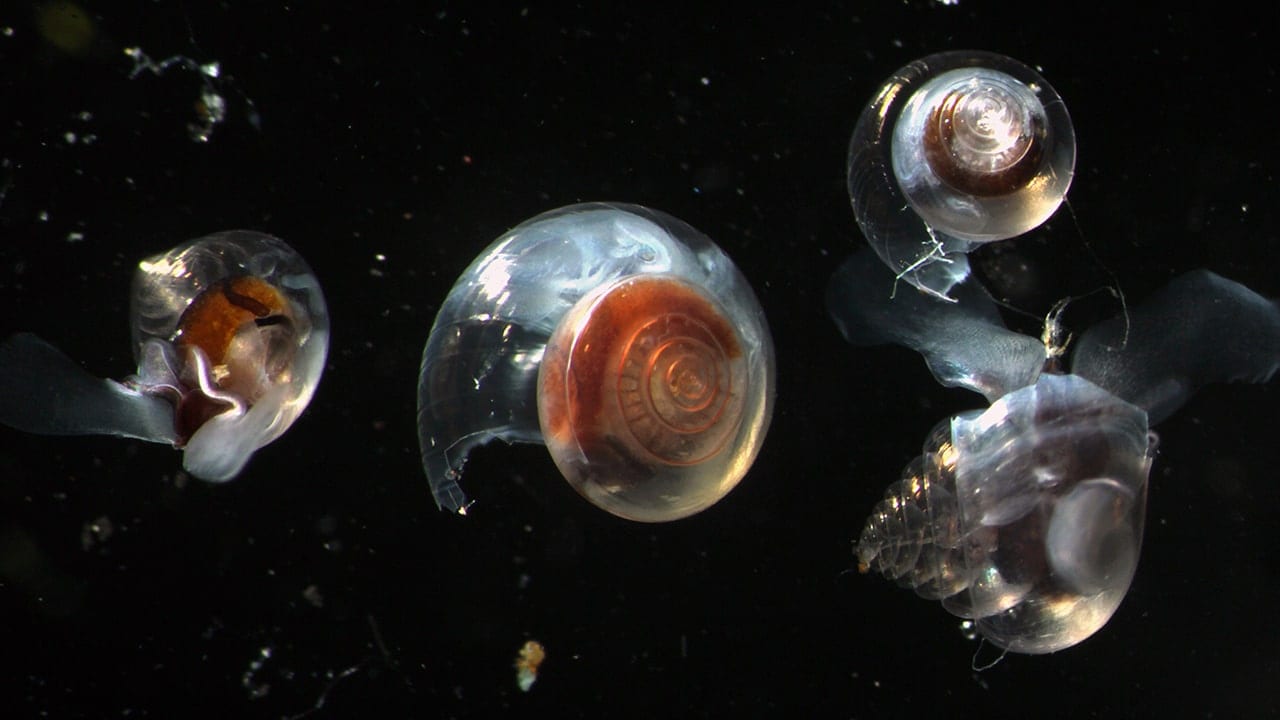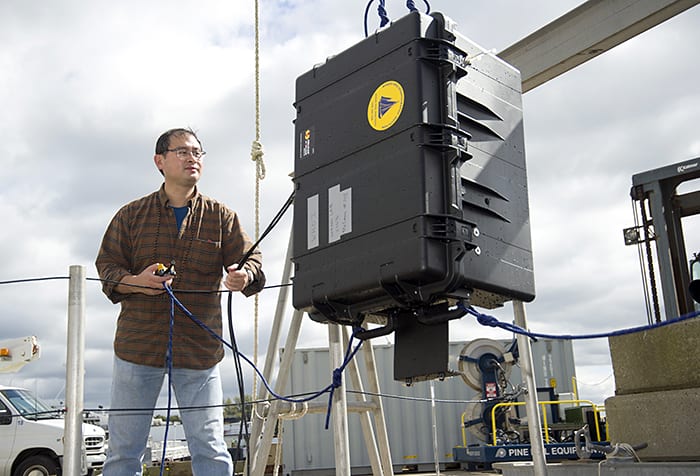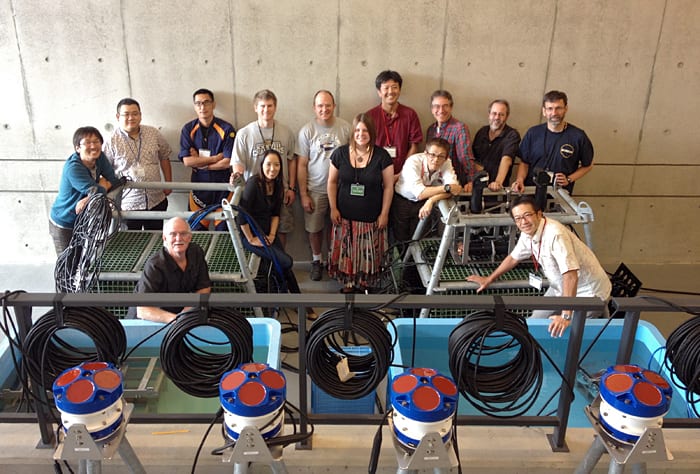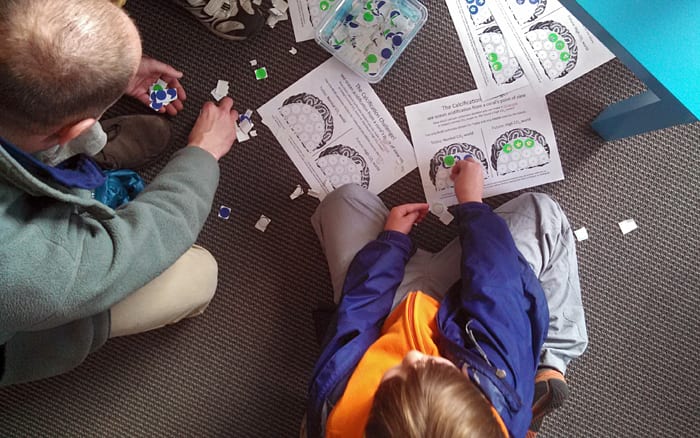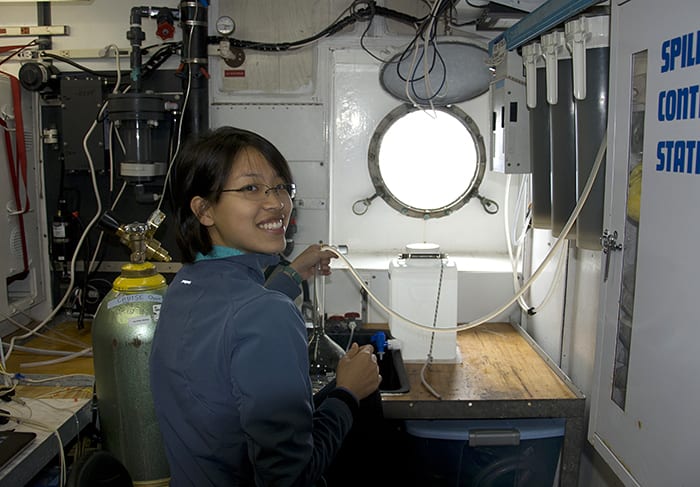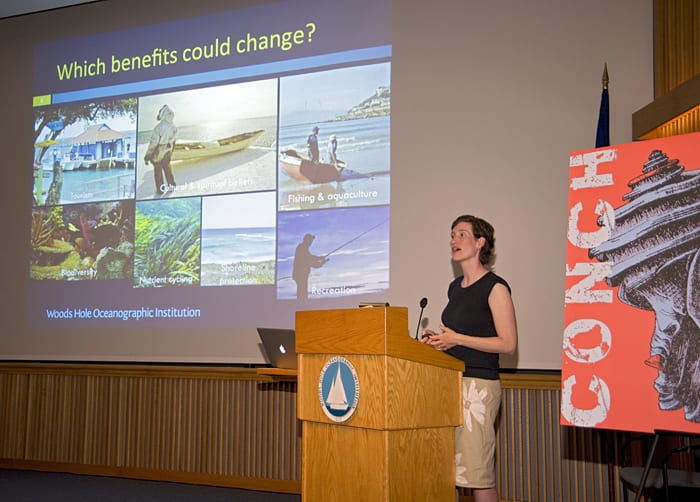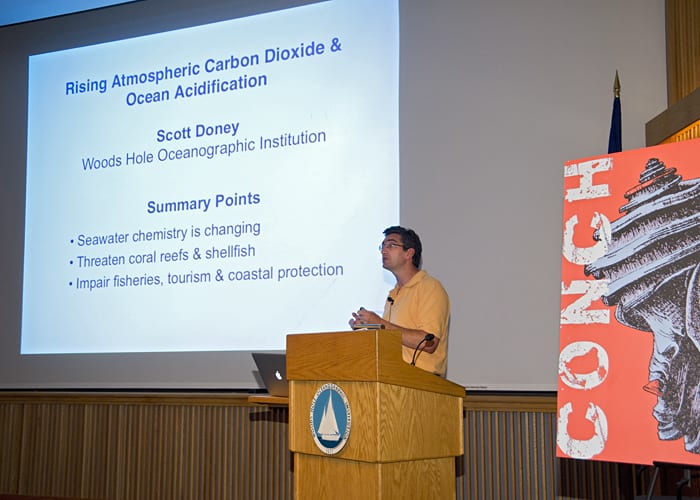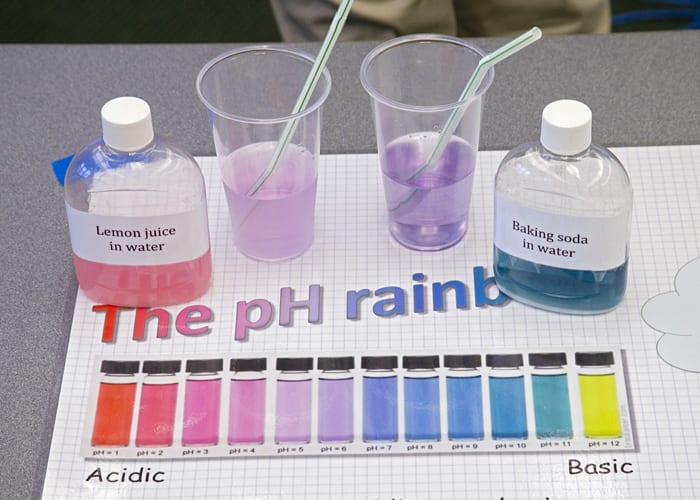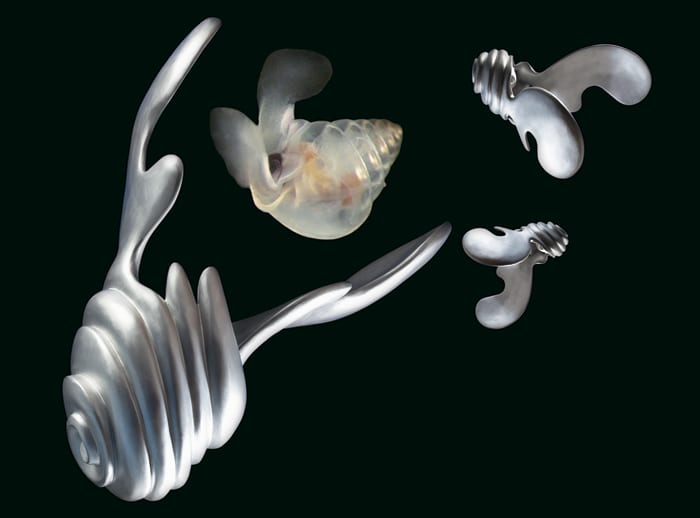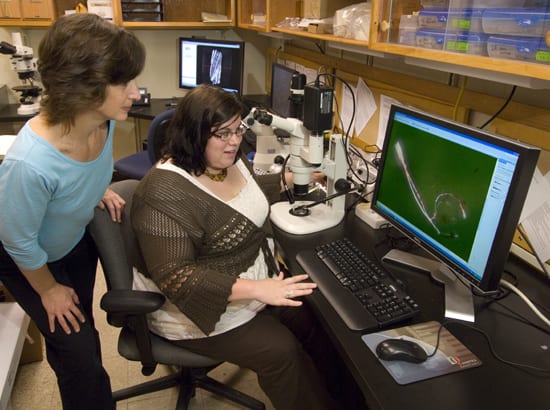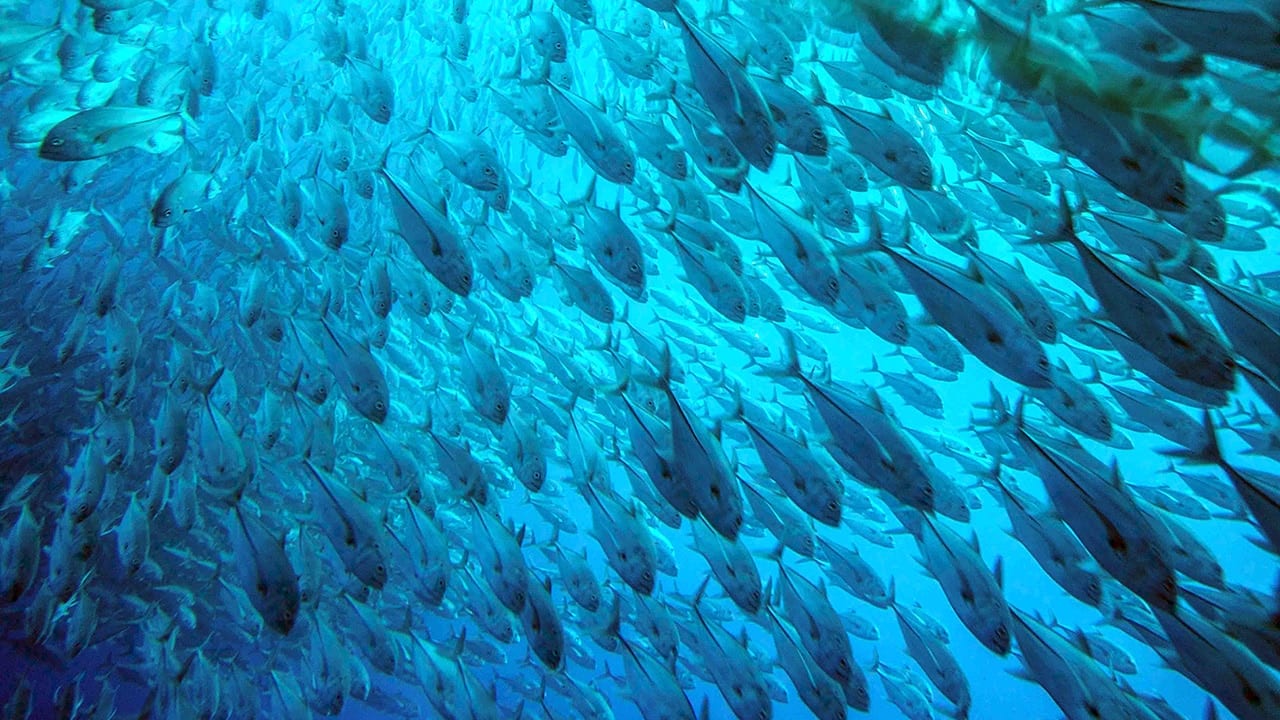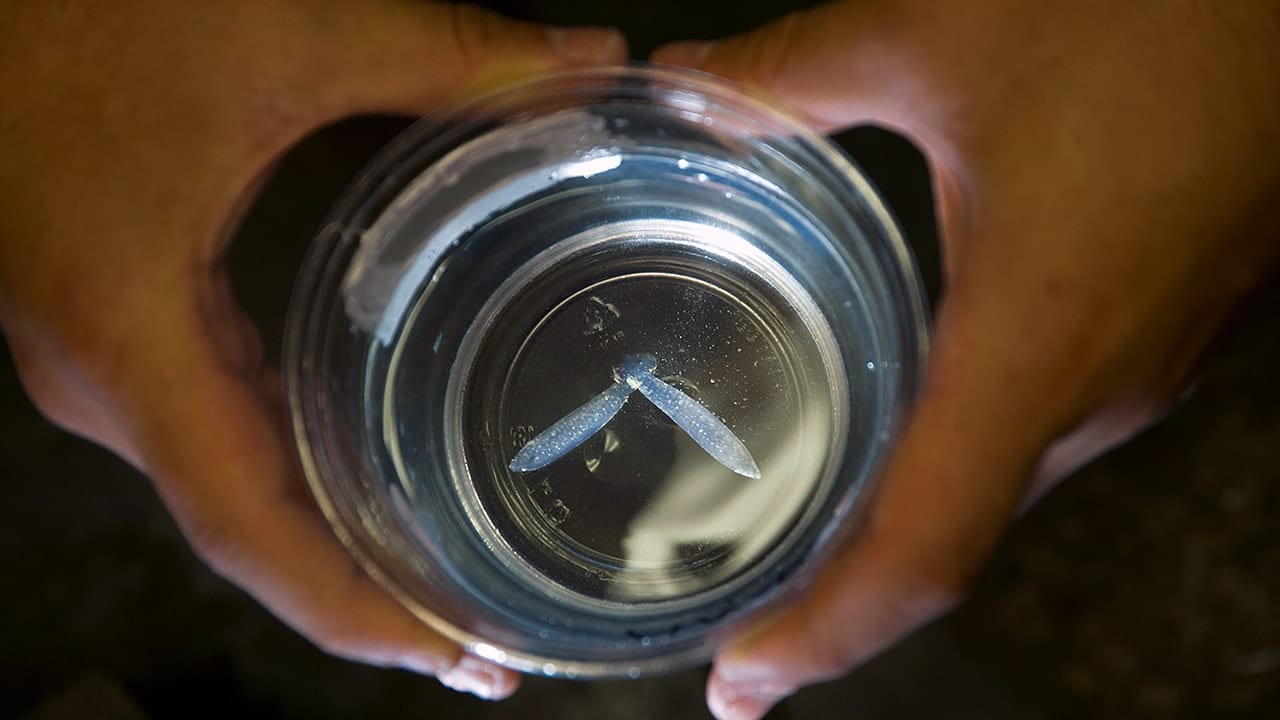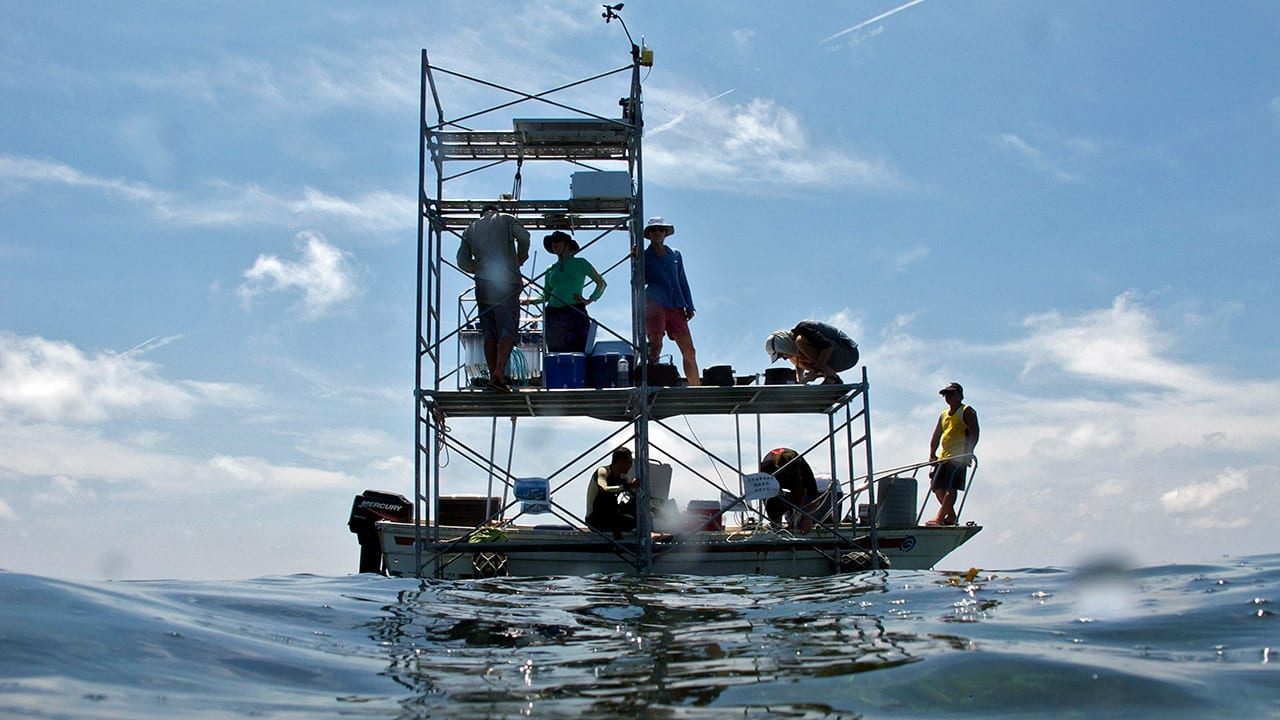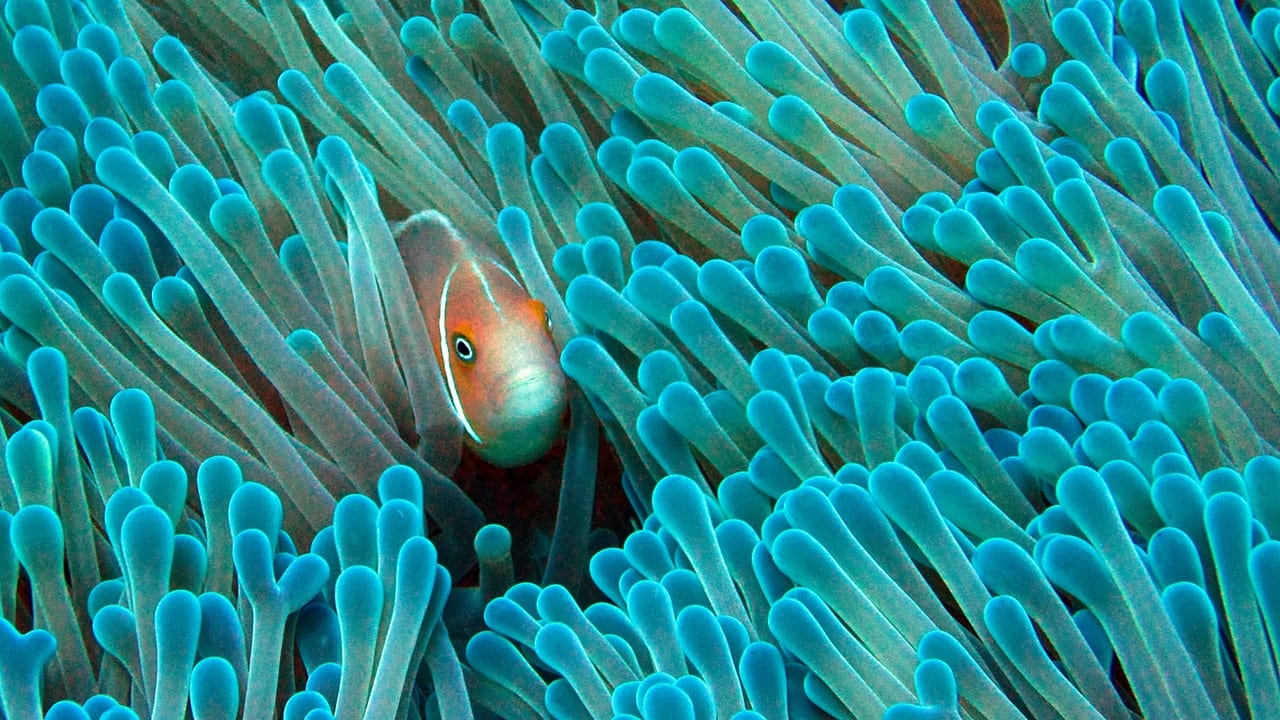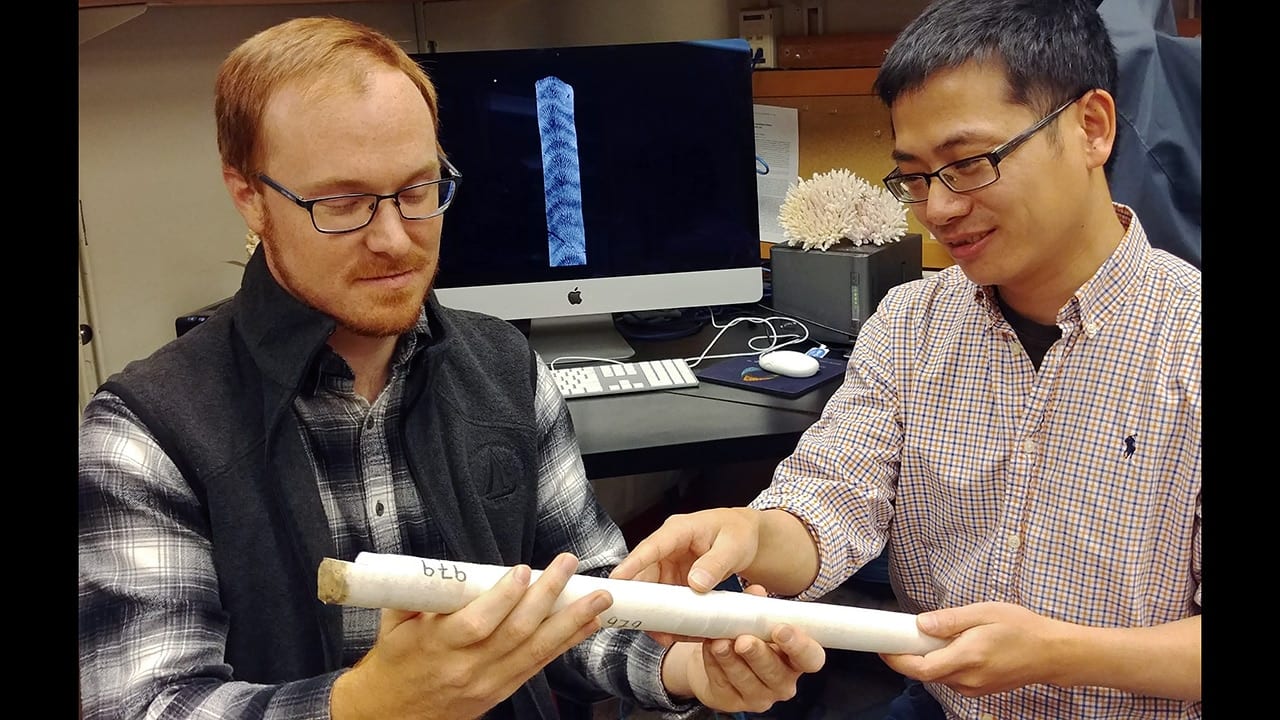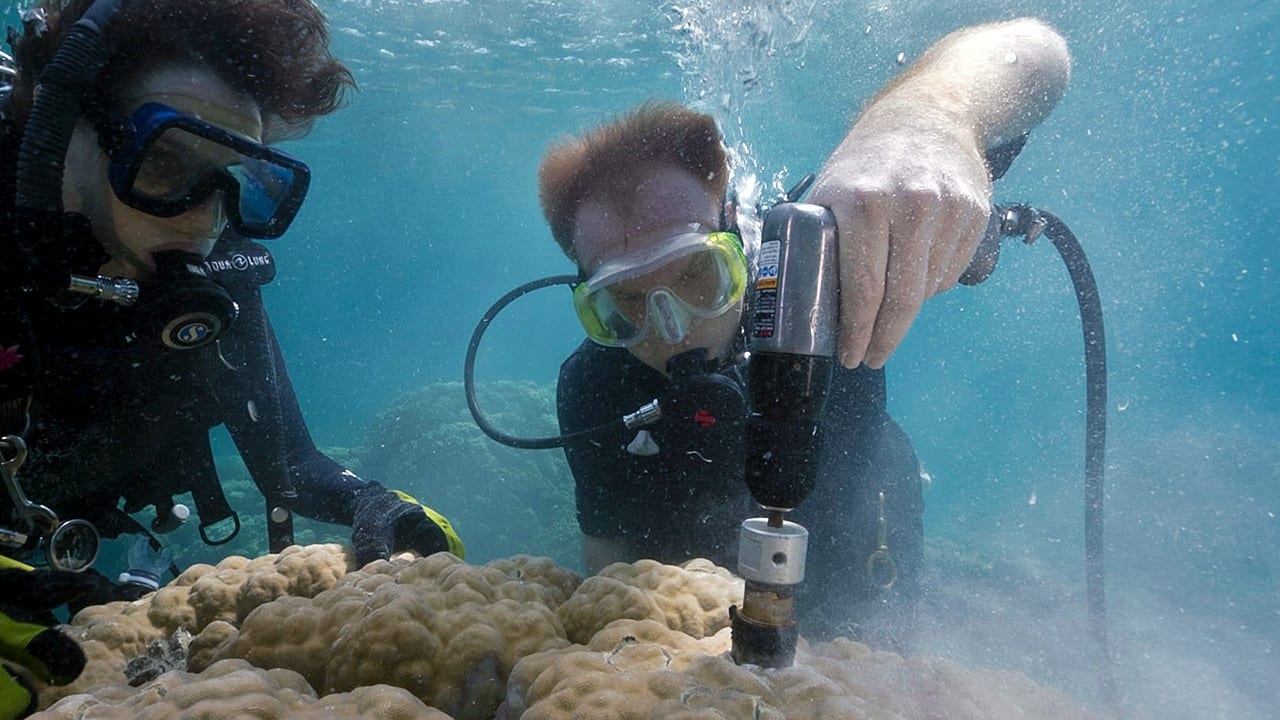Multimedia Items
Carbon Dioxide, Shell Building, and Ocean Acidification
To build shells and skeletons, marine organisms, such as this hypothetical clam, extract calcium ions and carbonate ions from seawater, combining them into solid crystals of calcium carbonate that are laid down to make shells.
Read MoreIs Ocean Acidification Affecting Squid?
By Daniel Cojanu, Elise Hugus :: Originally published online September 26, 2014
Read MoreOcean Acidification in a Cup
Abby Heithoff (right), a recent MIT/WHOI Joint Program graduate and recipient of the 2011 Pantaleyev Award, talks with visitors at the Woods Hole Climate Fair about Read More
Ocean Acidification’s Natural Laboratory
Research associate Kathryn A. Rose preserves coral samples at the University of Panama’s NAOS laboratory during a expedition to the Gulf of Panama’s Pearl Islands in June 2011. Rose’s […]
Read MoreExploring ocean acidification
Postdoctoral Investigator Sarah Cooley (right), of the Marine Chemistry & Geochemistry department, leads a group of teachers through a classroom laboratory exercise exploring ocean acidification and its effects on […]
Read MoreA sensor to monitor acid in the ocean
Excess carbon dioxide in the atmosphere is making the ocean more acidic and less hospitable to shelled marine life. At WHOI, scientists Jennie Rheuban, Aleck Wang, MIT-WHOI joint program student […]
Read MoreButterflies of the Ocean
Future Ocean Vision
A group of students from the Perkins School for the Blind in Watertown, Mass., visited the Ocean Science Exhibit Center recently on what has become a regular event sponsored […]
Read MoreOcean Toolbox
Marine chemist Zhaohui “Aleck” Wang recently tested an instrument he developed in collaboration with WHOI engineers for his research on ocean acidification and the carbon cycle. This […]
Read MoreOceanCubes
A team from WHOI led by Associate Scientist Scott Gallager and the Okinawa Institute of Science and Technology (OIST) recently announced plans to install the first OceanCubes observatory […]
Read MoreExploring Acidification
Liz Drenkard, an MIT-WHOI Joint Program student assists participants of the Cambridge Science Festival in an activity that illustrates how ocean acidification affects […]
Read MoreArt Meets Acidification
MIT-WHOI Joint Program student Sophie Chu studies changes in the ocean caused by ocean acidification, which strips seawater of the chemical building blocks that corals, clams, and other […]
Read MoreAcidification on the Horizon
WHOI cientists Scott Doney, Anne Cohen, and Sarah Cooley (left to right) participated in a panel discussion about ocean acidification in Redfield Auditorium in August 2012. […]
Read MoreA Changing Ocean
In early August, WHOI marine chemist Sarah Cooley spoke at a public event on ocean acidification, which she calls “a side effect of industrialization.” As the atmospheric […]
Read MoreThe Ocean’s Acid Test
In early August, WHOI marine biogeochemist Scott Doney spoke at a public event on ocean acidification, a problem arising from the burning of fossil fuels and the […]
Read MoreThe Ocean’s Acid Test
Seawater has a pH of around 8.2 on average, meaning it is slightly alkaline. For the past several decades, however, that number has been slowly, but perceptibly dropping, making the […]
Read MoreArt in Ocean Science
When sculptor Cornelia Kubler Kavanagh showed photographs of her work to WHOI biological oceanographer Gareth Lawson, the scientist immediately recognized her subject as pteropods. Thus was born a unique […]
Read MoreAcidic ocean fallout
Research specialist Anne Cohen and MIT/WHOI Joint Program student Meredith White monitor baby sea urchins in the lab for possible effects from ocean acidification. The oceans have […]
Read MoreCorals Under Threat
A large school of bigeye trevally swim past a submarine carrying WHOI scientists descending in Cabu Pulmo National Park on the east coast of Mexico’s Baja California Peninsula. Overfishing had decimated […]
Read MoreHolding the Key
Science Scaffolding
Dongsha Atoll is a remote coral reef ecosystem in the South China Sea, about two meters below sea level. With no solid ground from which to work, researchers from Anne […]
Read MoreHide Out
An anemone fish finds refuge in its namesake location—an anemone. This pair were photographed in the Phoenix Islands Protected Area (PIPA), a place that has drawn attention from scientists […]
Read MoreSkeletons in the Corals
Nathan Mollica (left), a graduate student in the MIT-WHOI Joint Program, and WHOI scientist Weifu Guo examine a sample cored from the skeleton of a coral. They put […]
Read MoreCoring Corals
Woods Hole Oceanographic Institution scientist Anne Cohen (left) and Nathan Mollica, a graduate student in the MIT-WHOI Joint Program, extract core samples from a giant Porites coral in Risong Bay, Palau. They and WHOI […]
Read More
